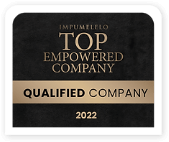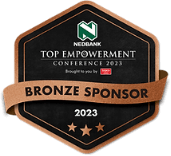“Many medium and large organisations have established internal L&D functions. The L&D role is strategic in the organisation; leaders often brand their activities as corporate universities, corporate academies or leadership centres.” Jan Rijken and Nick van Dam. 49 Tools for L&D
The digital age has changed the expectations of a corporate academy, putting significant pressure on organisations to upskill and reskill their workforce at the speed of business.
While the scope of a corporate academy can vary from one organisation to another, a high-performing corporate academy in the digital age follows it to deliver on promises and align with business strategy.
Let’s take a deeper dive into the four components of a corporate academy in the digital age:
Mobile platforms for learning at your fingertips.
As we have seen through the COVID-19 pandemic, digitisation offers a huge opportunity to transform corporate learning and address some of its current deficiencies. Learning content now housed in the cloud is accessible across multiple devices, and teaching environments and users can generate, share, and continually update it. Integrated cloud-based learning and experience platforms enable more than just new learning programmes or nifty smartphone apps. Leading organisations are expanding their use of cloud-based learning to run personalised learning. Applications such as MOOCs (massive open online courses), small private online courses, instructional videos, learning games, e-coaching, virtual classrooms, online performance support, and online simulations are part of your options. Digital learning solutions will become the largest learning format for any corporate academy.
In-person classroom experiences that are high-impact and immersive.
Companies still have compelling reasons to keep elements of corporate learning in person in specialised learning facilities. Any successful residential development programme allows employees to unplug and enjoy a respite from an always-on, 24-7 tempo. This physical separation from the daily grind should not be underestimated. If employees have no opportunity to step away from their working environments – which are increasingly remote and virtual – the same old behaviours are constantly reinforced for good and ill, and the chance for more reflective, committed learning is lost. Any in-class programme should be part of a blended learning journey that typically plays out over three to 12 months and through which learners gain expertise, develop and practice skills, and shift their mindsets. Repetition and application of learnings on the job contribute to effective learning.
Workplace learning that is core to a company’s culture
Formal and planned learning plays an invaluable role in people’s capability building. However, this kind of learning is a tiny part of personal development. Globally, workers spend 35 hours (on average) per year on formal education. For workplace learning to happen, leaders should advance a culture where people share expertise, collaborate, give and receive real-time feedback, network, change roles, participate in task forces and project groups, and enjoy on-the-job coaching and mentoring.
Analytics for learning to enhance performance and measure impact
Similar to any other business function, there are tremendous opportunities to tap into big data and use predictive analytics to guide L&D decisions and optimise learning experiences. Big data will also allow for more effective learning programmes by recommending courses to people based on, for example, interests, roles and activities on their agendas. Furthermore, analytics can show leaders the correlation between attending learning programmes and enhanced performance. Finally, any corporate academy needs to ascertain if its initiatives are aligned with and prioritised by the business and to what extent it is successful in building expertise and developing new skills that impact the business.
Ok, now what?
Achieving the next level of change – akin to the revolution that Amazon brought to retailing – will require a shift in digital tools, learning programmes, and interventions and an agile, engaged, data-driven learning organisation. You can use the insight from the corporate academy in the digital age model to do the following:
- Assess the current focus and capabilities of the corporate academy.
- Develop a strategic plan with proposed actions based on the future direction and identified capability gaps of the corporate academy.
- Engage with senior business executives to gain understanding and active sponsorship for the new direction and strategy of the corporate academy.
Get in touch with us to help you formulate your Corporate Academy.



